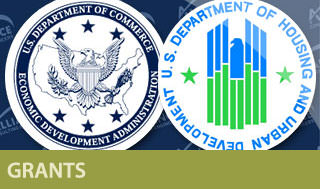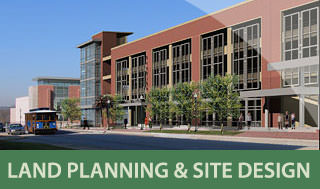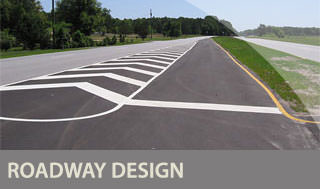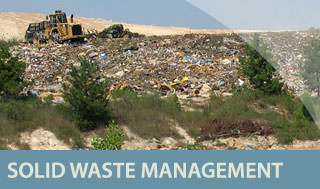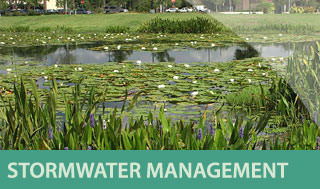Alliance Consulting Engineers

Alliance Consulting Engineers, Inc. Noted in State of the City Address
January 30, 2007
Columbia Mayor Bob Coble’s 2007 State of the City Address
Introductions and Thanks
Thank you Charlie, and thank you all for being here tonight. I would like to introduce my fellow members of Columbia City Council: E. W. Cromartie, Anne Sinclair, Sam Davis, Tameika Devine, Daniel Rickenmann and Kirkman Finlay. I also want to recognize my wife Beth, my daughters Liz and Lucy and my son LaBorde, and my minister Ed McDowell.
The City has hundreds of employees whose hard work and dedication make Columbia a great place to live and work. I would ask all of our City employees to stand. Our city is blessed to have the leadership of our City Manager. Charles Austin has done an outstanding job in guiding our City and staff.
In Columbia, our relationship with our neighborhoods is strong. I would ask that our neighborhood presidents stand and be recognized. Also, we have a number of our business leaders here tonight. Would you please stand.
Improving our working relationship with Richland County Council will be a priority this year. Tonight we have with us Chairman Joe McEachen and other County Council members. We have talked and we are going to begin to build trust and establish our common agenda.
Vision
Last year we talked about our economic vision for Columbia and our strategies for entering the knowledge economy. We talked about Columbia becoming a world class city with a transformed economy that will power not only our region, but our State’s economy. This goal can only be realized if we have a strong city that provides the services, innovative programs and quality of life that support the jobs that a globally competitive marketplace requires.
I am pleased to report that in 2006 we made solid progress toward achieving our vision. Tonight, I want to talk about what we have accomplished in the last year and our plans for continuing and advancing that transformation in 2007. Then, I want to talk more specifically about some challenges that have arisen in our city that could threaten our progress and how we propose to overcome these challenges.
2006 Accomplishments
In 2006 we continued what I have termed Columbia’s Renaissance. This is the revitalization of the city core marked by reinvestment and repopulation, the emergence of new shops, restaurants, and the bold expansion underway at USC. Our renaissance is occurring while we are also strengthening all areas of the City with more residents, more homeowners, and greater home values. We have reversed a three decade decline in population and homeownership. Columbia was a safer city in 2006 with crime down to historic lows. And as we made this progress in 2006, we maintained our strong commitment to economic diversity and inclusion.
I want to note specifically some of the key projects from 2006 and the progress we made.
Innovista
Innovista construction began in 2006. The Horizon Center and the Discovery Center blocks are under construction now. The City of Columbia and Richland County are financing the two parking garages in that construction. None of this would be possible without the leadership of Dr. Sorensen.
Fuel Cells
In 2006 the USC Columbia Fuel Cell Collaborative agreement was signed by USC, the City, the South Carolina Research Authority, and Engenuity to implement our twenty year Hydrogen Energy/Fuel Cell strategic plan. Six Fuel Cell Challenge grants were announced at Engenuity ’06. These grants are funding the implementation of fuel cell research, demonstration and education projects in the City. Columbia was awarded the 2009 National Hydrogen Association’s annual convention, the largest convention we have ever had. We were selected as one of four cities nationwide to receive a fuel cell bus as part of a competitive federal program. 2006 was the year Columbia got on the national and international radar screen as a leader in fuel cell research and commercialization.
Downtown Residential Development
The State newspaper said it best at the end of the year: "The downtown housing boom continued in 2006" (The State 12-31-06). Columbia has had an explosion of new residential development. There are in excess of 2700 units currently under construction or in pre-sales in the Columbia market with a large percentage in Downtown. In addition, there are in excess of 3100 units in the planning stages, including projects at Bull Street and the Kline property. As Virginia Bedford said in the newspaper "It’s not just Earlewood, it’s downtown. People want to live downtown." (The State 1-7-07).
Redevelopment of Columbia
The Beach Company unveiled the plans for the new downtown neighborhood at CanalSide. The first release was a sell out. Plans for Canal Front and the Saluda Riverwalk were approved. Completing the Three Rivers Greenway’s connections to neighbors up and down and on both sides of the river system must be our goal. The City will fund our portion to continue building out this wonderful centerpiece of beauty and a powerful economic development engine.
Since its opening in September 2004, The Columbia Metropolitan Convention Center has continued to serve our city as a central meeting place for a wide range of organizations and events. To date the center has attracted over 210,000 guests and has produced over 1600 event days. With the opening later this year of the Hilton Hotel the convention center will realize its full potential as a venue for multi-day meetings and conventions.
EdVenture had a very successful year with an annual attendance 200,000, and the Columbia Museum of Art has established itself as the cultural anchor of Downtown. This year, the Museum, will install a major fountain sculpture on the corner of Main and Hampton Streets, a benchmark for the renaissance our City is undergoing, and a long-lasting source of pride for the citizens.
We are nearly finished with the Harden streetscaping project, and as a result, development in Five Points is set to skyrocket. Lady Street and Two Notch Road streetscaping projects are finished. Benedict Stadium is a wonderful addition to Two Notch. With us tonight is Dr. Swinton of Benedict. I want to thank him for the growth and redevelopment that he has brought to Columbia. Our Southeast Park Project opened to rave reviews. We are building parking garages in the Vista and Downtown.
City Council voted to assist Allen University with the restoration of Chappelle Chapel, a significant historic building with great tourist appeal, and Columbia College with a wonderful recreation facility that will be a tremendous addition to North Columbia. Tonight I would like to recognize Dr. Young’s representative from Allen University and Dr. Caroline Whitson, President of Columbia College.
The First Citizens Building opened on Main Street. The new Sheraton Palmetto Building Hotel is almost complete. We broke ground on the Adesso project and began the Vsion project. The Barringer Building is now residential, and the McCory Building is being redone. I want to thank Daniel Rickenmann for his leadership in that project and his commitment to the revitalization of Main Street. The City Center Partners Business Improvement District was extended. I want to thank Matt Kennell, Jim Apple and Tom Prioreshi, for there great work for Downtown. We even found adaptive reuses for the Old Columbia Fire Station and Gallery 701. The Olympia improvements were funded.
The East Central Redevelopment Commission and Redevelopment Plan have been approved. The East Central Board has secured significant private financing as well as funding from Richland County and the City. The North Columbia Master plan was adopted, and Council funded land acquisition. The City is committed to North Columbia, the North Main Streetscaping project, and the redevelopment of Farrow Road. Sam Davis has been a tireless advocate for North Columbia and these projects.
The Charles R. Drew Wellness Center had a very successful opening year in 2006. This state of the art facility has provided our citizens with a facility dedicated to their health and well being. We have over 2000 members. I want to thank Councilman E.W. Cromartie and Congressman Clyburn for their tireless leadership to build the Charles R. Drew Wellness Center. E.W. has raised $100,000 for scholarships.
Fighting Crime
Crime is at a historic low. In 2006 violent crime was down 6%, property crime down 10% and total crime was down 9%. Murders were at a historic low. Of course, statistics do not mean anything if you are a victim of crime or you do not feel safe. Forty-five newly hired and trained officers will be on the street in June. The City has issued a RFP for a security camera system. I want to thank Chief Crisp and the entire Columbia Police Department for their hard work.
No Smoking Ordinance
In 2006 Columbia took a leadership role in protecting the health of our citizens, and especially our workers, with the enactment of our No Smoking Ordinance. Since then a host of cities have adopted such ordinances.
Better City Government
The disparity study was completed and adopted in 2006. The development and review process for new businesses and developments runs much faster, and we introduced the innovative Livability Court and concentrated on quality of life infractions. We appointed the Code Enforcement Task Force to review ways to improve how the City addresses neighborhood issues. I would like to recognize the Chair Reverend Wiley Cooper and the members of the Task Force.
We established goals for City Council and the City Manager as well as implemented performance based budgeting.
I want to thank Richland County Council for making the tough decision to fund our Regional Transit Authority. We are committed to working together to find a permanent solution. I would ask that the Richland County Council please stand and be recognized.
2006 was a good year for Columbia. We are truly blessed to live in Columbia in a time of such accomplishment and hope. In 2007, we will continue our work on these initiatives and many others.
I want to highlight some of the projects I think will be especially important in the coming year.
Agenda for 2007 - Opportunities:
Waterfront District/Innovista
USC, the Guignard family, and Columbia announced a sweeping plan in April to redevelop five hundred acres in our Downtown as part of the Innovista Waterfront District. This is a long-term project that must be a top priority.
Fuel Cell District
The National Hydrogen Association Convention will bring companies like BP, Chevron, Shell, BMW, Toyota and Honda to Columbia. Last year Engenuity and the City unveiled plans for a Fuel Cell District in Columbia which will showcase fuel cell technologies in real-world applications, such as portable, stationary and vehicular power. It will be a model for integrating education, discovery and deployment of hydrogen and fuel cell related activities in an urban setting. We will be the first city in the world to create such a district. We are working with Engenuity, USC and the South Carolina Research Authority to pass statewide legislation that will provide incentives for developing the Fuel Cell District and will encourage fuel cell businesses to locate in the District. Once this legislation passes, the City should implement local incentives to complement the state program. We must act with a sense of urgency to make the National Hydrogen Association’s Convention in 2009 Columbia’s coming out party as a key leader in the Hydrogen economy.
Ladies and Gentlemen, the fuel cell district and our efforts to enter the new economy of technology and innovation will not be possible unless the City, the County, the State and the University of South Carolina work together. I have invited Dr. Sorensen to join me here tonight to make an important announcement regarding the University’s ongoing efforts to be a leader in fuel cell technology development.
[Dr. Sorensen’s remarks]
Thank you Dr. Sorensen.
Bull Street Neighborhood
The redevelopment of the Bull Street Neighborhood, the single largest tract to come available in Downtown Columbia in decades, will transform our City. The master plan calls for apartments and single family homes, office space, and retail space. The plan also calls for the renovation and reuse of several historic buildings and the building of a central park connected to the Three Rivers Greenway.
Columbia Presidential Primary Committee
The City, in partnership with our tourism and economic development organizations and the private sector, has initiated efforts to better market Columbia in the new economy. The best opportunity we will ever have to market Columbia to the nation will occur with the Republican and Democratic Presidential Primaries in early 2008. To take advantage of this opportunity, we will appoint a Columbia Presidential Primary Committee, co-chaired by Kirkman Finlay and myself, to plan communications strategies and coordinate messages among those involved in the primaries. I want to thank Kirkman.
Main Street
Main Street along with the Vista, the Riverfront and Innovista make a strong Downtown Columbia. Our action plan for Main Street must include starting Main Street Phase II in June, doing a retail plan for Main Street in conjunction with the City Center Partners; and resolving the redevelopment of the Palmetto Center.
Columbia Festival of the Arts
As Columbia continues to focus on the knowledge based economy, it is critical to recognize the importance of arts and culture in attracting and keeping the businesses and individuals that will lead our economy in the decades to come. Here in Columbia we are extremely fortunate to have an arts community of depth, diversity, and quality. And it’s only getting better thanks to the effort and good work of organizations like the Cultural Council of Richland and Lexington County, and the more than 100 non-profit arts groups and artists.
The Columbia Festival of the Arts in late April and early May will be the most important cultural event in this City’s history. This eleven day event will include four theater openings, four museum exhibits, three dance performances, and nine musical concerts. The Festival will install the new Columbia Arts Hall of Fame, and there will be a concert of great Columbia performers at the Eau Claire Auditorium. The festival will make us proud. I would like to recognize Marvin Chernoff and the committee.
The Garden District
Historic Columbia Foundation has announced plans to restore and replenish fourteen acres of grounds in our Downtown. Once completed, it will include a lush, historic antebellum garden, an African-American swept yard, grounds developed by the mother of our 28th president, and vibrant park-like green spaces open to the public. This Garden District, located at the center of Columbia’s major areas of current and future development will provide a wonderful opportunity to promote heritage tourism by focusing on the unique landscape legacy and the growing interest in historic gardens and cultural landscapes in an environment that encourages people to park and walk and explore Columbia unique heritage. We must support and promote the Garden District. I want to thank Robin Waites and the Historic Columbia Foundation for their work on this project.
Beautification of Columbia
In 1995 the City of Columbia commissioned a study which resulted in the City of Columbia Beautification Plan. This was a ten year road map for the Columbia Appearance Commission. Almost all of the recommendations of this plan have been accomplished. Now it is time to plan for the next ten years. Columbia is enjoying great redevelopment, and we need a new coordinated plan for the beautification projects associated with this growth. I would propose the City adopt an ordinance establishing a Municipal Improvement District (SC Code 5-37-10). The district has very flexible criteria for establishing a fee to fund the planning, planting and care for the streetscape and beautification projects in the district.
These are some of our priority projects for 2007. If we continue to pursue these opportunities with vigor and the common goal of making Columbia a better place for all our citizens, our transformation to a world class city will be on-track.
Agenda for 2007 – Challenges:
So far tonight, I have focused on the opportunities before us in the coming year. I would like to take a few minutes and talk about what I see as some great challenges that are before us, as well. These challenges have arisen as a consequence of our growth as a community, and the realities of the world in which we live today. They threaten our quality of life and our ability to achieve our vision. But they are not insurmountable and I am convinced that we can meet and overcome these challenges and make our City stronger for the future.
Business Retention Plan
Our first challenge is to keep our existing businesses thriving in Columbia. We need to create a perpetual and self-sustaining business retention program as part of our overall economic development strategy. We have seen great success with many of our homegrown businesses like Deepal Eliatamby’s company, Alliance Consulting [Engineers, Inc.] Deepal’s staff has grown to twenty five since the company was started less than two years ago. In the coming weeks, we will be calling together the economic development professionals of our community to form a core group. The core group will help us develop a list of our most valuable companies and our most growable companies. This group will be asking the business community to volunteer time for this very important endeavor.
Homelessness
Homelessness is not just a city problem, it is a community problem and it will take the community coming together to help solve the problem. We need to find a long term solution that is specific to the needs of Columbia. While we can learn from other communities, we need to develop our own customized solution. This year the City successfully opened and operated two winter shelters. We provided enhanced security that lessened the impact on the surrounding neighbors. Our plan for the future must be based on research and data, it must be performance based, and results oriented. Our plan includes the following. We will establish a Housing First Pilot Program. Supportive housing with assertive care is the national model that is experiencing the greatest success in reducing homelessness. We will establish an advisory committee of business people, service providers and community leaders to develop the criteria, the program and the metrics for evaluating the results. I am pleased to announce that Jim Apple of First Citizens has agreed to chair the advisory committee. Jim is not only the outstanding leader of First Citizens but chairs the Business Improvement District and will chair the Central S.C. Alliance. Thank you Jim. Additionally, the City will continue to operate the Homeless Service Center; we have created a Homelessness Court; we must establish a prisoner re-entry program; and the City will shelter folks for next winter. I want to thank attorney George Johnson for his efforts to link us with the American Bar Association’s model Homelessness Court program.
Climate Protection Action Committee
Global warming is an urgent threat to the environmental and economic health of our communities. We appointed the Climate Protection Action Committee to prepare An Action Plan to Reduce Municipal Greenhouse Gas Emissions and submit the plan to City Council by June. I want to thank Anne Sinclair for her leadership on this issue. Part of our plan will be the purchase of the City’s first hybrid car. Anne has agreed to show me how to drive it. I also want to thank Soni, Jim Sonefield, for agreeing to be our spokesperson. We watched Al Gore’s "An Inconvenient Truth" for the first time at Soni’s home.
Affordable Housing Task Force
While, there is no doubt that every part of Columbia is experiencing rebirth and redevelopment, there is great doubt as to whether all our citizens will be able to afford to live in this new Columbia. The recommendations of the Affordable Housing Task Force will be presented to City Council in February. I want to thank Pat Noble for leading the effort to create the Task Force. Those recommendations include continuing to fund the City Living Loan Fund; creating a housing trust fund; and adopting a voluntary inclusionary zoning program based on incentives and targeted areas. We should carefully consider those recommendations and hopefully adopt them.
Criminal Domestic Violence Task Force
The tragic events at the Colony Apartment show the need to focus on domestic violence. We have established a community wide Criminal Domestic Violence Task Force to review all our strategies and efforts. Nancy Barton of Sistercare and Tameika Isaac Devine will co-chair the task force. Columbia should adopt the innovative approach that some States are using called Lethality Assessment, an effort to identify and assist victims of domestic violence who are at risk of being killed. I want to thank Tameika for her outstanding leadership on this issue, youth violence and with our Municipal Courts.
Comprehensive Gang and Youth Violence Initiative
Finally, tonight ladies and gentlemen, I want to talk about what I think is the highest priority facing our City in 2007. For more than fifteen years we have witnessed the spread of gang activity from the cities to the suburbs to rural communities. Unfortunately, this expansion of gang activity generally translates into higher levels of violence, particularly violence among juveniles and young adults. More important, a recent study conducted by professors from the Department of Criminology and Criminal Justice at the University of South Carolina revealed that South Carolina has not been immune to this growth in gang activity. The Columbia area, in particular, had some of the highest levels of gang activity.
Given these conditions, we are in need of a more effective response to gang and youth violence. We are fortunate, however, in that we are not the first community to deal with this issue. Many cities and counties across the country have confronted and responded to gang and youth violence in their community, and they can provide us with ideas and lessons. More important, the National Institute of Justice and the Office of Juvenile Justice and Delinquency Prevention have dedicated significant resources over the years to evaluating these responses to gang and youth violence in various communities, which provides us with knowledge on what works and what does not. It is important for us to look to this research so that we develop the most effective solutions and avoid spending time and resources on efforts that are unlikely to address our problem.
The consensus finding of this research is that the most effective responses to gang and youth violence are comprehensive. This means they must involve prevention, intervention, and suppression efforts. Communities need to gather their resources to prevent at-risk juveniles from being caught in a pattern of violence, and provide help to those who want out. At the same time, criminal justice officials have to hold juveniles and young adults accountable if they are unwilling to leave a life of violence. The research has shown that communities must give equal attention to these three efforts if they are going to effectively address this problem, and relying on only one of them will result in a limited impact.
Such a comprehensive approach requires the assistance of criminal justice agencies, social service providers, schools, non-profit organizations, churches, community organizations, and community members. Each of these groups in some way is already identifying and responding to the problem of gang and youth violence in our communities. However, they are generally working independent of one another, and as a result their resources are not being effectively coordinated to address the problem. Again, the research on this issue confirms that an effective initiative requires coordination among these various groups. A task force is required that involves all parties in collectively identifying the problem, formulating a plan, and subsequently playing a part in implementing that plan.
It is important to recognize that there is no single detailed plan for how such a comprehensive initiative should move forward. Rather, the research shows that the most effective comprehensive responses are based on a deliberate multi-step problem-solving process that leads to a fitting and effective solution for a specific community.
Tonight I would call for a "Marshall Plan" response to youth violence and gangs. This effort cannot be a government program but rather a community response. Yes government leadership and resources will be needed, but to be sure, this problem will not be solved by government or law enforcement. It is going to take everyone- schools, churches, religious institutions, non-profits- it will take all of us working together.
Tonight I would call for the creation of the Comprehensive Gang and Youth Violence Initiative. Consistent with the research on what works, the initiative should involve a broad based group of government agencies, community organizations, and community members who will formulate a strategic plan of prevention, intervention, and suppression. An integral part of this effort would be the support provided from the Department of Criminology and Criminal Justice at USC, and Benedict College, who have expertise in gang and youth violence reduction programs. The initiative will unfold in five a stage process:
- A detailed analysis of the gang and youth violence problem in the area.
- The formation of the Gang and Youth Violence Prevention Council composed of leaders from various government agencies and community organizations.
- The formation of an integrated comprehensive response plan through the efforts of that Council.
- The implementation of the response plan, and
- An assessment of the response plan to evaluate its effectiveness.
The initial assessment will gather information to develop a detailed picture of gang and youth violence in the community. A full report on this assessment will then be provided to the Council, and it will be used as a foundation for the development and implementation of a response plan.
This initiative is based on sound research of what works, and is built around a broad based coalition to provide prevention, intervention, and suppression in the most effective way. I would ask that Sheriff Leon Lott, Representative Leon Howard, and myself co-chair the Council. Tonight we have a number of persons here who are playing a vital role in this effort to help our youth. Sheriff Lott is here tonight. I want to thank the Sheriff for his leadership in addressing youth violence. Also, with us tonight is United States Attorney Reggie Lloyd who is addressing this issue on the federal level.
The Interdenominational Ministerial Alliance representing the faith community must be a partner in this effort. I want to recognize Reverend Dr. Henry Cleare, President of the Interdenominational Ministerial Alliance and all the members of the Alliance. Please stand. I recently met with the Alliance, and I think Reverend Redfern II said it best, "the engagement of our youth must be our goal." Another partner is AV Strong and Gang Out. Finally, I want to thank and recognize Dr. Mike Smith, Dr. Rojek, and Abigail Rogers who drafted this plan. They have spent many hours helping formulate the best strategy, and we look forward to their help in the implementation. I would also say on a personal note that I would never have been in politics except for the encouragement and support of Abigail’s father, the late W. R. Rogers.
Conclusion
I have invited a group of young men and women who attend Columbia High School and Dreher High School to join me at the podium. These students are very successful scholars, athletes, and artists, and they are representatives of the very best in our community. Let me briefly introduce them. Shanna Hook is a senior at Columbia High. She is President of the Drama Club, an outstanding athlete, a member of the National Honor Roll, and a mentor for Big Brothers/Big Sisters. Tyler McGee is a junior at Dreher High School. He is a member of the National Honor Society. He made the All-State Orchestra and is a member of the Dreher Math Team. Craig Boykin, Jr. is a senior at Columbia High School. He is the Captain of the Varsity Football Team, a member of the National Honor Society, and has been on the honor role every quarter since the 9th grade. Kaileen Yeh is a sophomore at Dreher High School. She is on the A Honor Roll and is on the tennis team. She also made the All-State Orchestra and plays in the South Carolina Youth Philharmonic. Kaileen is a member of the Academic Decathlon.
I wanted you to meet Shanna, Tyler, Craig and Kaileen because they, and the thousands of young people they represent in our City, are the reason that the issues we have discussed tonight are important. They are the reason why we must address the issue of youth violence; they are the reason we must enter the new economy and create high wage jobs of the future; they are the reason we must redevelop every part of town and open the door of opportunity to everyone in our diverse community; they are the reason we must encourage the arts; they are the reason we must do our part to fight global warming; and they are reason we must have affordable housing in strong and safe neighborhoods.
Shanna, Tyler, Craig and Kaileen represent the future of Columbia. Tonight, we stand on the shoulders on many great men and women who dedicated themselves over the past 221 years to making Columbia the City we love today. Now it is our turn to do our part because someday in the not too distant future, these four young impressive students and their peers that they represent, will climb upon our shoulders and take their position of leadership. The City we make will be the City they inherit. In the coming year, I would ask that we all work together to realize our vision for Columbia so that these and other future leaders of Columbia will look back with gratitude on the work that we did to make our City the greatest place in the world to live.
Thank you.

